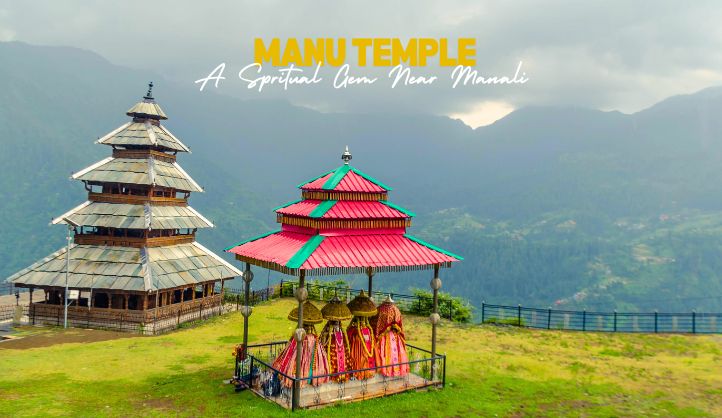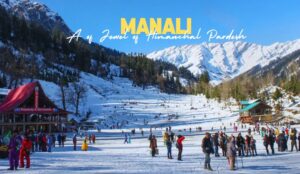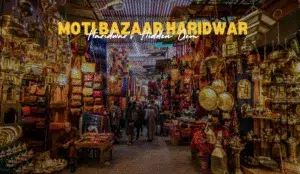Manali, a picturesque hill station in Himachal Pradesh, is known for its breathtaking landscapes, adventurous activities, and serene temples. Among its many attractions, the Manu Temple stands out for its historical and spiritual significance. Located in the small village of Old Manali, this temple is dedicated to Manu, the ancient sage believed to be the creator of mankind according to Hindu mythology.
If you’re planning a trip to Manali, visiting the Manu Temple can offer you not just a spiritual experience but also a deeper connection with India’s rich cultural heritage. In this blog, we’ll take you through everything you need to know about the Manu Temple—its history, significance, architecture, how to reach it, and tips for an enriching visit.
Who Was Manu?
Before diving into the details of the temple, it’s essential to know who Manu was. Manu is a revered figure in Hindu scriptures, often described as the first man on Earth and the progenitor of humanity. According to the ancient texts, Manu wrote the “Manusmriti,” a guide for laws, ethics, and social conduct. The temple is believed to be the only one dedicated to Manu in India, making it a unique and special place for devotees and visitors alike.
History and Mythology of the Manu Temple
The Manu Temple has its roots in ancient mythology. It is said that after a great flood, Manu stepped off his ark and set foot on the land where the temple now stands. This location is believed to be where Manu meditated and prayed for humanity’s well-being. As a result, the site holds immense spiritual significance.
While the exact date of the temple’s construction remains unclear, it is thought to have been rebuilt and restored several times over the centuries. The current structure reflects a blend of traditional Himachali and modern architectural styles.
The Architecture of the Manu Temple
The Manu Temple boasts a stunning design that complements its serene surroundings. The temple is constructed using local stone and wood, showcasing the traditional architectural style of the region. Its pagoda-like structure, intricate carvings, and sloping roofs are typical of Himachali temples.
The temple’s interiors are simple yet captivating, with idols of Manu and other deities placed in the sanctum. The peaceful ambiance inside makes it a perfect spot for meditation and quiet reflection.
What makes the Manu Temple even more special is its location. Perched on a hill, the temple offers breathtaking views of the surrounding mountains, lush greenery, and the Beas River flowing nearby. The journey to the temple itself is an experience, as you pass through narrow lanes, traditional houses, and apple orchards.
How to Reach the Manu Temple
The Manu Temple is located in Old Manali, about 3 kilometers from the main town of Manali. Here’s how you can get there:
- By Road: Manali is well-connected by road to major cities like Delhi, Chandigarh, and Shimla. Once you reach Manali, you can hire a taxi or take an auto-rickshaw to Old Manali.
- On Foot: For those who love walking, the temple can be reached on foot from Manali. The uphill trek takes about 30–40 minutes and offers scenic views along the way.
The narrow streets leading to the temple are lined with quaint cafes, shops, and guesthouses, adding a unique charm to the journey.
Best Time to Visit the Manu Temple
The Manu Temple can be visited throughout the year, but the best time depends on your preferences:
- Summer (March to June): The weather is pleasant, making it ideal for sightseeing and exploring the area.
- Monsoon (July to September): While the lush greenery is at its peak, the region experiences heavy rainfall, which can make the journey challenging.
- Winter (October to February): The temple and its surroundings are often covered in snow, creating a magical atmosphere. However, make sure to dress warmly, as temperatures can drop significantly.
The temple is open to visitors from early morning until evening, so plan your visit accordingly.
Things to Do Around the Manu Temple
While the Manu Temple is the main attraction, the area around it has plenty to offer:
- Explore Old Manali: Known for its bohemian vibe, Old Manali is home to charming cafes, handicraft shops, and vibrant street art. Take a stroll and soak in the laid-back atmosphere.
- Visit the Beas River: Just a short distance from the temple, the Beas River is perfect for a leisurely walk or some peaceful time by the water.
- Enjoy Local Food: Old Manali is famous for its cafes serving delicious food, ranging from local Himachali dishes to international cuisines. Don’t miss trying some steaming hot momos and thukpa.
- Shop for Souvenirs: Pick up unique handmade items, woolen shawls, and Tibetan artifacts from the local markets.
- Trek and Adventure Activities: For the adventure enthusiasts, Old Manali is the starting point for several treks, such as the Jogini Falls trek and the Solang Valley hike.
Tips for Visiting the Manu Temple
- Respect Local Customs: As the temple is a place of worship, dress modestly and maintain a respectful demeanor.
- Footwear: Shoes are not allowed inside the temple, so be prepared to leave them outside.
- Photography: While you can capture the beauty of the temple’s exteriors, photography inside the temple may be restricted. Check with the temple authorities.
- Carry Essentials: If you’re walking to the temple, wear comfortable shoes and carry water.
- Plan for Time: The narrow lanes and hilly terrain may take longer to navigate than expected, so plan for extra time.
Why Visit the Manu Temple?
The Manu Temple offers more than just a glimpse into ancient mythology. It’s a place where spirituality meets natural beauty, providing a unique experience for every traveler. Whether you’re a history enthusiast, a nature lover, or someone seeking inner peace, the temple has something for everyone.
Nearby Place to Visit
1. Hadimba Devi Temple
- Distance: Around 3 km from Manu Temple
- Highlights: Hadimba Devi Temple is an ancient temple, dedicated to Goddess Hadimba, a character from the Mahabharata. Surrounded by cedar forests, the temple is famous for its unique pagoda-style architecture and tranquil atmosphere. It’s a great spot for photography and meditation.
2. Old Manali Village
- Distance: Walking distance from Manu Temple
- Highlights: Old Manali is a charming village known for its vibrant cafes, cozy guesthouses, and bohemian vibe. You can shop for handicrafts, enjoy live music, or simply relax at one of the many riverside cafes.
3. Jogini Waterfalls
- Distance: Approximately 6 km (2–3 hours trek from Old Manali)
- Highlights: Jogini Falls is a stunning natural attraction located near the Vashisht Temple. The trek to the falls takes you through beautiful apple orchards, small villages, and dense forests. It’s perfect for nature lovers and adventure enthusiasts.
4. Vashisht Hot Springs and Temple
- Distance: Around 4 km from Manu Temple
- Highlights: The Vashisht Temple is famous for its hot water springs, believed to have medicinal properties. You can take a dip in the warm waters or explore the nearby ancient temples dedicated to Sage Vashisht.
5. Mall Road, Manali
- Distance: About 3 km from Old Manali
- Highlights: The Mall Road is the heart of Manali, bustling with shops, restaurants, and markets. It’s an excellent spot for buying souvenirs, trying local Himachali dishes, and enjoying the lively atmosphere.
6. Beas River
- Distance: Close to Old Manali
- Highlights: The Beas River flows through Manali and offers a serene setting for a relaxing walk, photography, or even some adventurous activities like river rafting (available in the lower areas).
7. Solang Valley
- Distance: Around 13 km from Old Manali
- Highlights: Solang Valley is a hub for adventure sports like paragliding, zorbing, skiing (in winter), and quad biking. Surrounded by snow-capped peaks, it’s a must-visit for thrill-seekers and nature lovers.
8. Naggar Castle
- Distance: Approximately 22 km from Manu Temple
- Highlights: This historic castle offers breathtaking views of the Kullu Valley. Built in the traditional Himachali style, it now houses a museum and a café, making it a perfect blend of history and leisure.
9. Manu Market
- Distance: Located in Manali town
- Highlights: This bustling market is a great place to shop for local handicrafts, woolen clothes, and trinkets. You’ll also find delicious street food to savor.
10. Bhrigu Lake Trek
- Distance: Starting point is about 20 km from Old Manali
- Highlights: Bhrigu Lake is a pristine glacial lake located at an altitude of 4,300 meters. The trek takes you through lush meadows, snow-covered trails, and stunning views of the Himalayas. It’s a moderately challenging trek for adventure lovers.
11. Van Vihar National Park
- Distance: Around 3 km from Old Manali
- Highlights: A peaceful park ideal for families and nature lovers. It features dense deodar forests, a small lake for boating, and benches to relax while soaking in the serene ambiance.
12. Club House
- Distance: 2 km from Manu Temple
- Highlights: Managed by Himachal Pradesh Tourism, the Club House offers recreational activities like indoor games, skating, and boating. It’s a fun spot for families and kids.
13. Kothi Village
- Distance: About 15 km from Manali
- Highlights: This quaint village is known for its panoramic views of snow-capped mountains and the Beas River gorge. It’s a peaceful retreat away from the bustling crowds of Manali.
14. Rohtang Pass
- Distance: Approximately 51 km from Old Manali
- Highlights: A high-altitude mountain pass that offers jaw-dropping views of glaciers, snowfields, and the Himalayas. It’s a popular spot for snow activities and a scenic drive.
Conclusion
The Manu Temple near Manali is a hidden gem that combines spiritual significance with natural splendor. Its serene ambiance, fascinating history, and stunning architecture make it a must-visit destination for anyone traveling to Himachal Pradesh. So, the next time you plan a trip to Manali, make sure to include the Manu Temple in your itinerary. It’s a place where the past comes alive, and the beauty of nature leaves you spellbound.
FAQs About Manu Temple
1. What is the Manu Temple, and why is it significant?
The Manu Temple is dedicated to Sage Manu, the creator of humanity according to Hindu mythology. It is believed to be the only temple in India dedicated to Manu, making it a spiritually and historically significant site. Legend says that Manu meditated here after the great flood, and this is where he prayed for the betterment of mankind.
2. Where is the Manu Temple located?
The Manu Temple is situated in Old Manali, about 3 kilometers from Manali town in Himachal Pradesh. It is nestled in the hills, surrounded by lush greenery and scenic beauty.
3. How can I reach the Manu Temple?
- By Road: You can take a taxi, auto-rickshaw, or even walk from Manali town to Old Manali.
- On Foot: Many visitors prefer walking to the temple, as the route passes through charming streets, apple orchards, and cafes, offering a unique experience.
The temple is easily accessible, but the last stretch involves a short uphill climb.
4. What are the temple timings?
The temple is usually open to visitors from 6:00 AM to 6:00 PM. It is advisable to confirm the timings locally, as they may vary during festivals or special occasions.
5. Is there an entry fee for the Manu Temple?
No, there is no entry fee for visiting the Manu Temple. It is open to all devotees and tourists.
6. What is the best time to visit the Manu Temple?
- Summer (March to June): Ideal for pleasant weather and sightseeing.
- Winter (October to February): Offers a magical experience with snow-covered surroundings.
- Monsoon (July to September): The area is lush and green, but the roads can be slippery due to heavy rainfall.
7. Is the Manu Temple suitable for families and kids?
Yes, the Manu Temple is family-friendly. However, keep in mind that the uphill walk and narrow streets leading to the temple might require extra care, especially if you are traveling with young children or elderly members.
8. Are there any restrictions or rules for visiting the temple?
- Visitors are expected to dress modestly and behave respectfully, as it is a place of worship.
- Footwear is not allowed inside the temple, so you’ll need to leave your shoes outside.
- Photography inside the temple may not be permitted; confirm with the temple authorities.
9. What other attractions can I visit near the Manu Temple?
There are several nearby attractions, including:
- Old Manali for its vibrant cafes and shops.
- Hadimba Devi Temple (3 km away).
- Jogini Waterfalls (6 km, a short trek).
- Vashisht Temple and Hot Springs (4 km away).
- Solang Valley and Mall Road for adventure and shopping.
10. How much time should I allocate to visit the Manu Temple?
You’ll need around 1–2 hours to explore the temple, enjoy the serene environment, and soak in the spiritual vibes. If you’re walking from Manali, factor in additional time for the journey and exploring the area.





